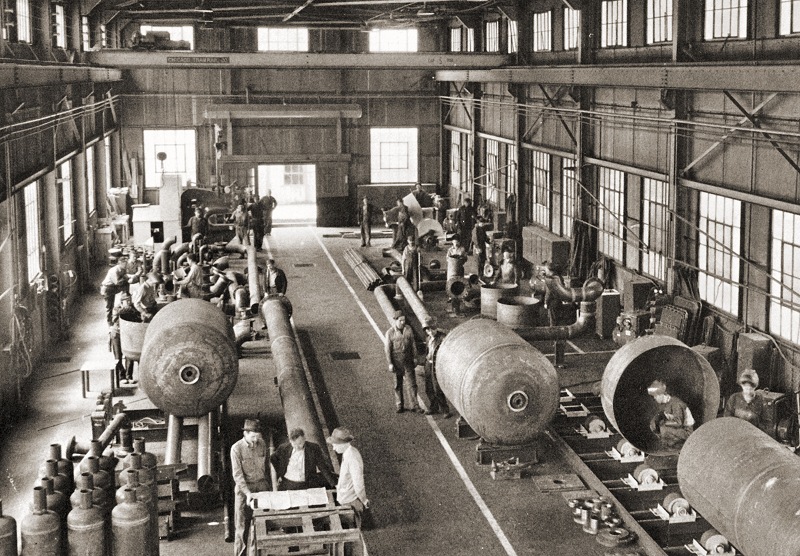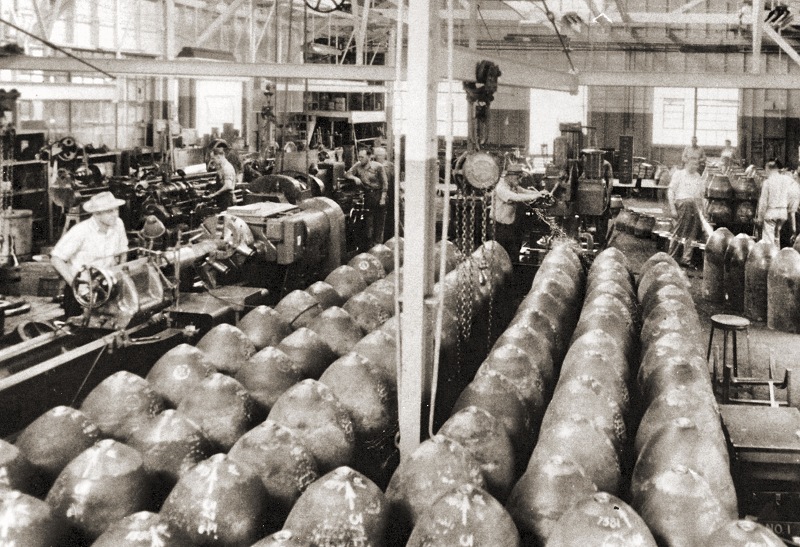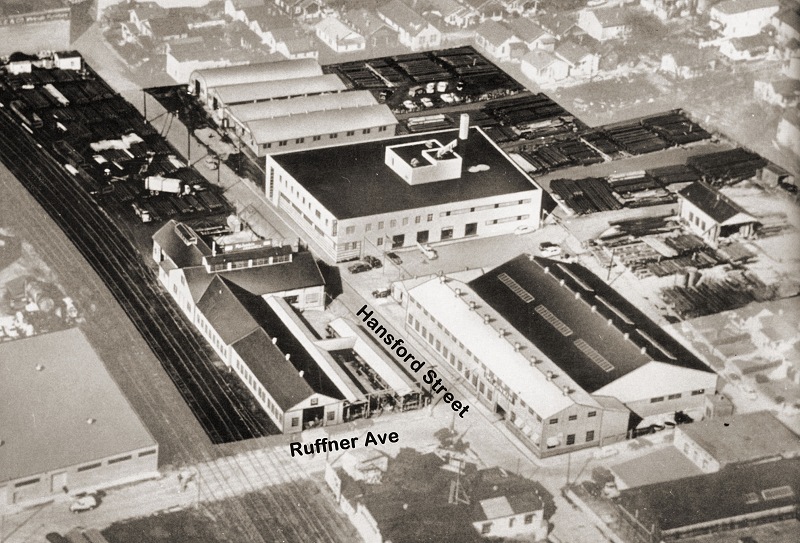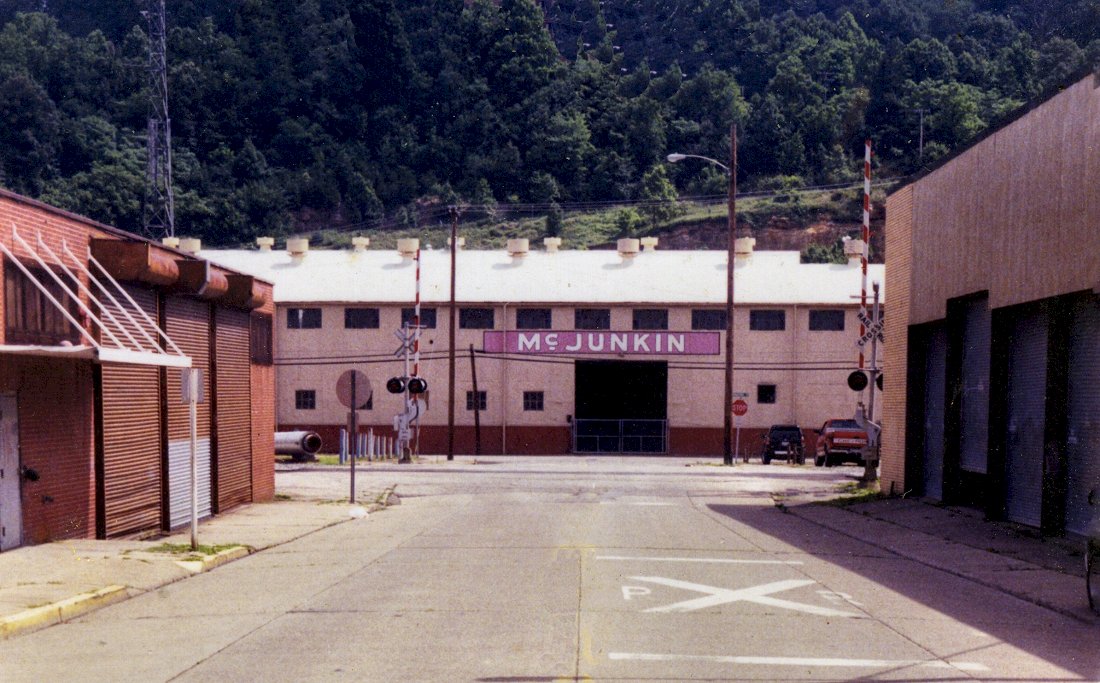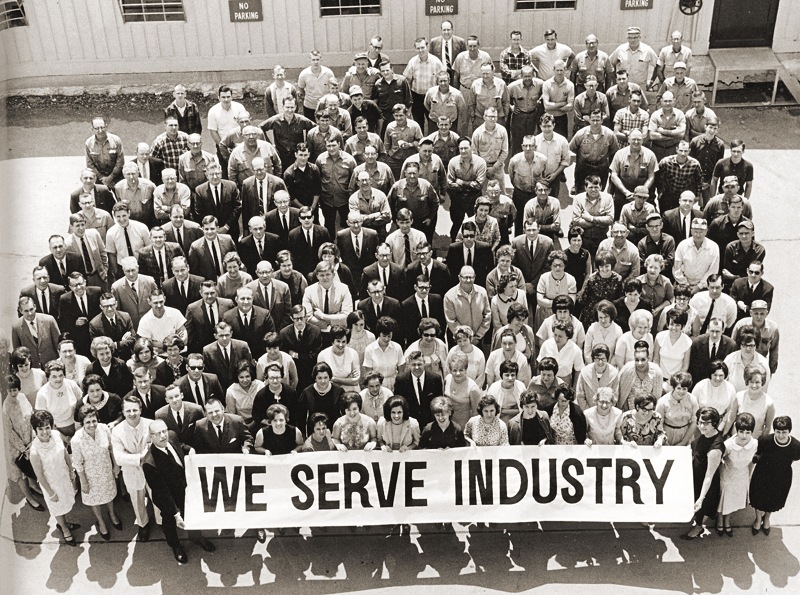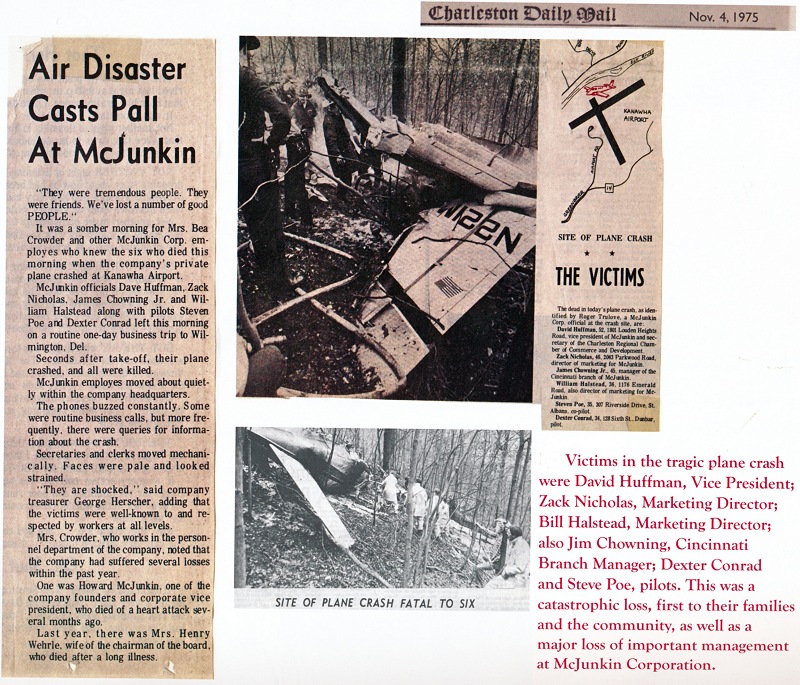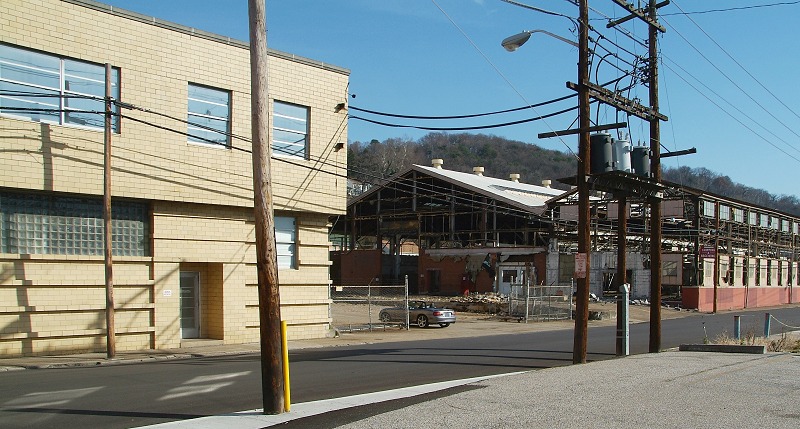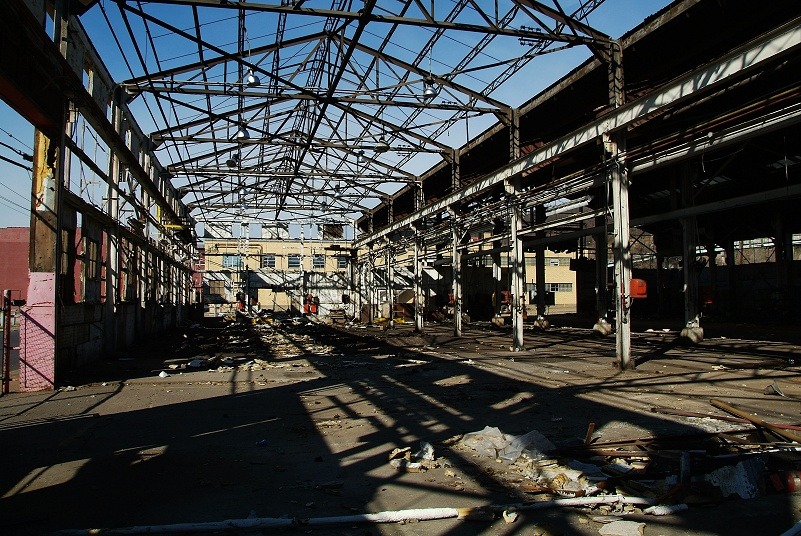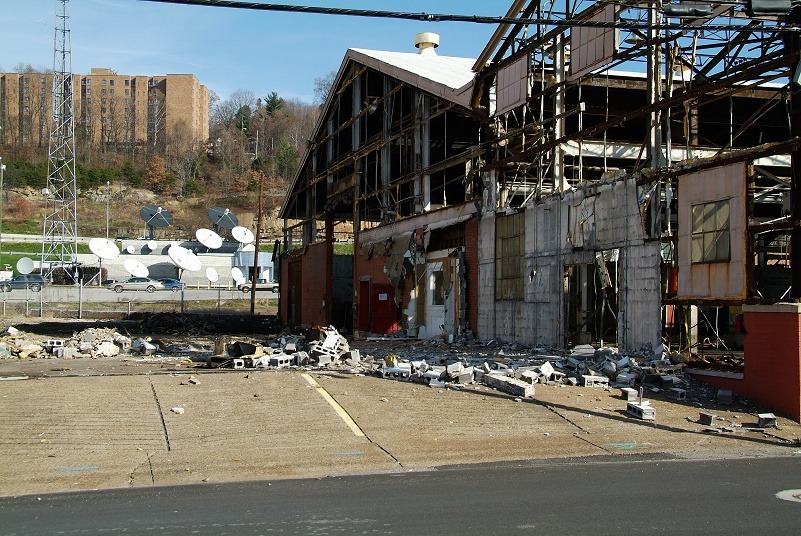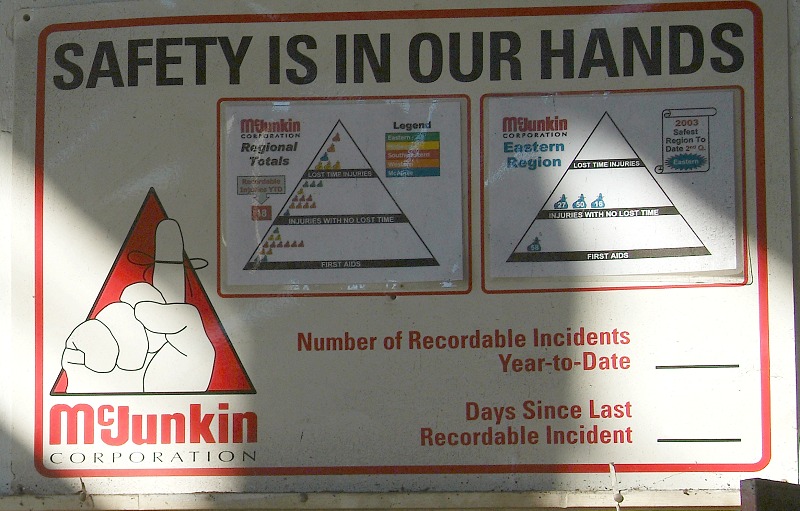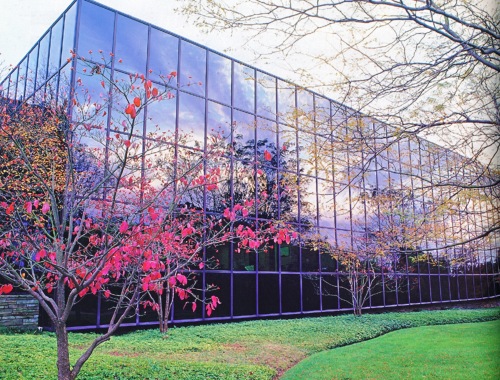Because of McJunkin's dependence on oil and gas customers, a major
slump in the oil and gas industries in the 1980s had an adverse impact
on the company's fortunes for much of the decade. As a result McJunkin
had to cut staff and implement other cost-saving initiatives. But by the
late 1980s the company was once again looking to expand. In 1987
McJunkin acquired Grant Supply Co., adding 11 branches in the Southwest.
Also of note, in 1989 the company merged its oil and gas division with
Appalachian Pipe, creating McJunkin Appalachian Supply Co. Despite a
difficult stretch, by the end of the 1980s McJunkin, with estimated annual sales in the $500 million range, cracked the Forbes list of the 400 largest privately owned companies
in the United States. The decade also was marked by the death of
Russell Wehrle in 1987, an event that led to the installation of a third
generation into leadership positions. W.B. "Bernie" Wehrle III became
president of the company and his cousin Michael Wehrle was named chief financial officer.
McJunkin grew on a number of fronts during the 1990s. In January 1992
it made a major acquisition, buying Republic Supply Co. of California.
Republic was older than McJunkin, formed in 1910. It distributed
industrial supplies, valves, pipe and fittings, and oilfield specialty
items to oil, energy, and natural resources companies. Republic
generated $96 million in annual sales in 1988, the last public estimate
before it was brought together with two other companies in 1990 to form Earle M. Jorgensen Co. Reportedly, due to difficult economic conditions, Jorgensen concluded that Republic, the smallest of three operations,
was expendable, and its sale would help to pay down debt incurred in
the buyout. For McJunkin, picking up Republic added 18 centers, of which
14 were located in California and 15 were new markets. Existing
McJunkin branches in Bakersfield, Los Angeles, and San Francisco were
incorporated into Republic operations, which possessed larger warehouses.
McJunkin and Rival Firm Joining Forces in 1994
McJunkin also achieved growth in the 1990s by way of joint ventures.
In 1994 the company joined forces with rival Charleston distributor
Cameron & Barkley Company to form McJunkin-Cambar. The new company
distributed electrical and electronic products and industrial mill
supplies, the goal being to pursue markets where the parent companies
were not operating. In addition, McJunkin and Cameron & Barkley
established a distributor consortium, International Supply Consortium,
dedicated to selling integrated supply and systems contracts for MRO
(maintenance, repair, and operations) and construction products. The
venture was soon supplemented by the addition of Bearings, Inc., adding
more than 300 locations. In 1998 McJunkin established another 50-50
joint venture, this time to do business south of the U.S. border.
McJunkin's partner was Mexico City-based Casa Trottner, which led a
group of Mexican partners. The resulting company, Trottner-McJunkin SA
de CV, would help McJunkin on more than one level. Finding a cultural
partner like Trottner allowed McJunkin to better serve customers with
Mexican and Latin American operations. Moreover, the parent companies
looked to combine their complementary inventories and reputations to
enter new Latin American markets through the joint venture, rather than
going it alone. In addition to spurring growth through partnerships
during the 1990s, McJunkin also added automated products to its slate,
creating McJunkin Process Automation Controls to handle the business.
The pipe and valve business entered a period of consolidation, with
larger distributors swallowing smaller operations. In order to keep
pace, McJunkin completed several acquisitions in the early years of the
new century, four in 2001 alone. In that year, McJunkin in alliance with
Cameron & Barkley and the McJunkin-Cambar joint venture acquired 18
Fairmont Supply Co. sites. For its share, McJunkin added locations in
the eastern and southwestern United States. Also in 2001 McJunkin
acquired Toledo, Ohio-based M.P. Wilkins Supply Co., the leading PVF
(pipes, valves, and fittings) distributor in northwest Ohio with more
than 50 years in business. As part of the deal, the Wilkins Supply
management team agreed to stay on to run the company, which would now be
known as "Wilkins- McJunkin Supply, a Division of McJunkin
Corporation." Furthermore, in 2001 McJunkin augmented its Controls
Division (the devices and instruments that remotely activate and monitor
the performance of valves used by oil refineries, chemical plants, and
paper mills), by purchasing virtually all of the assets of Automation
& Controls Specialists Inc., a Dublin, California, company that
served northern California and western Nevada. Finally, in 2001 McJunkin
acquired Joliet Valves Incorporated, based in Minooka, Illinois. Joliet
Valves was founded in 1971 and had evolved into a leading PVF
distributor in the Midwest and Great Plains markets. The company brought
with it 17 locations in Illinois, Indiana, Iowa, Minnesota, and North
Dakota. As had been the case with Wilkins Supply, the management team
would stay on after closing. The business would operate under the name
"Joliet Valves-McJunkin, a Division of McJunkin Corporation."
McJunkin underwent some management changes in 2002. In May of that
year Henry B. Wehrle, Jr., essentially retired, although he retained the
title of chairman of the board emeritus. He was replaced as chairman by
his nephew, Michael Wehrle, who also served as senior vice-president
and chief financial officer. His son, Bernie Wehrle, in the meantime,
was re-elected as president and chief executive officer. Also of note in
2002, McJunkin bought out its Mexican partner to acquire a 100 percent
interest in Trottner McJunkin Venezuela. In addition, McJunkin sold its
interest in McJunkin-Cambar to its joint venture partner Cameron &
Barkley, which in the years since the business was launched had been
purchased by Hagemeyer North America. Because of its acquisitions,
Hagemeyer had emerged as a competitor to its partially owned subsidiary.
It made sense to both parties that McJunkin sell out to Hagemeyer and
allow the joint venture, renamed Hagemeyer/CamBar, to continue in
business with a single corporate parent. By all accounts, the split was
amicable and integrated contracts were fulfilled.
In 2003 McJunkin completed a pair of acquisitions. First, it bought
Valvax, Corp., a Cincinnati-based valve products distributor and
fabricator, focusing on the chemical process, food, HVAC,
pharmaceutical, power, and pulp and paper industries. Valvax had offices
in Columbia, Ohio; Charleston, West Virginia; Evansville and
Indianapolis, Indiana; and Pittsburgh, Pennsylvania. The addition of
Valvax fortified McJunkin's ability to provide a wide range of valve
solutions to its customers. Several weeks later, McJunkin reached
another agreement, this time to purchase virtually all of the assets of
Indianapolis-based Cigma, LLC, a major provider of industrial pipe, pipe
fittings, meters, regulators, valves, and related products to the
natural gas industry. Cigma also brought with it sales offices in the
Cincinnati area and Kansas City. The addition of Cigma strengthened
McJunkin's growing gas products segment. McJunkin Red Man CorporationMRC Global (formerly McJunkin Red Man) is one the
world's largest suppliers of parts and supplies used by energy and
industrial customers. Operating from 400-plus locations,
predominantly in North America, the company distributes about 150,000
pipe, valves, and fittings (PVF), as well as general and specialty
products. Some 50% of MRC Global's sales are
attributable to maintenance, repair, and operations (MRO)
contracts, including procurement, warehousing, and inventory
management. Core customers are oil and gas exploration and production
giants, as well as transmission and storage, oil refining and
petrochemical processing companies, such as BP, Exxon Mobil,
and Valero. MRC Global went public in 2012.
|



